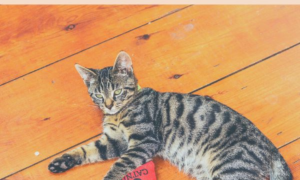With Easter approaching in the coming weeks, the glorious Easter lily is often a centerpiece of our lives and is one of my favorite flowers. However, the Easter lily does pose an inherent danger to cats.
Every single part of this delicate white flower is toxic to cats. If your cat eats just one bite of a petal, a leaf, the steam or even ingest the pollen, it can bring chaos to your cat’s digestive system. And if this is left untreated, your cat could suffer from kidney failure and possibly die.
However, it is not just the Easter lily that is dangerous to cats. Other flowers such as tiger lilies, rubrum lilies and a few species of the day lily are equally toxic to cats.
Signs Cat May Have Ingested Parts of A Lily:
Within two to four hours of ingestion, your cat may experience vomiting, lethargy, and lack of appetite.
Within the first one to three days after ingestion, your cat may experience increased thirst and urination, which then decreases if the kidneys begin to fail. If you suspect your cat has ingested a part of the lily, please get your cat to a veterinarian immediately.
What Is Treatment For Cat After Ingesting Parts of a Lily?
Time is of the essence here! Emergency veterinary care is critical. Care given within six hours greatly increases your cat’s chance of survival. After 18-24 hours, though, the prognosis will most likely not be as promising.
The veterinarian will empty the gastrointestinal tract by getting your cat to vomit. Your vet may also give your cat some activated charcoal to neutralize the toxins. IV fluid treatment may be necessary for a couple of days in an effort to prevent kidney failure. Your cat will need to remain under the vet’s car to monitor his blood chemistry and urine values.
How To Avoid Lily Toxicity?
Obviously, do not have any lilies in your home. Opt for other gorgeous Easter flowers instead. When adding flowers outdoors, check to ensure they are nontoxic to pets. Use resources should as the Pet Poison Hotline list of toxic plants or the ASPCA list of plants toxic and non-toxic for pets before purchasing plants for indoors or outdoors.
Source: pethealthnetwork.com







